
"Don't interfere with anything in the CONSTITUTION. That must be maintained, for it is the only safeguard of our LIBERTIES"
- Abraham Lincoln
We all celebrate 26th January every year as our Republic Day. It is one of the huge celebrating event in our country. This year, on 26th January 2017, the country has witnessed its 68th Republic Day.
We, being the loyal citizens of our country, know the reason behind the celebration. On 26th January 1950, the Constitution of India came into effect to administrate the country as a Sovereign Socialist Secular Democratic Republic.
The constitution of India is considered as the supreme law of our country that frame the outline of fundamental political principles, establishing the structure, procedures, powers, and duties of government establishments. It also sets the fundamental rights, directive principles, and duties of a citizen.
The constitution we have today has gone through a very interesting journey, thus, has many exciting facts that you must know. Below we have shared certain amazing facts of the Constitution of India, please read then with keen interest as many of them could be asked in competitive exams like IBPS, SSC etc.
The Longest Constitution in the World
 Yes! The constitution of India is the longest constitution in the world having 26 Parts, 12 Schedules, 448 Articles.
Yes! The constitution of India is the longest constitution in the world having 26 Parts, 12 Schedules, 448 Articles.
Till now it has gone through a total of 101 amendments.
We have the Constitution in both the scripts; Hindi and English.
The Indian Constitution has a total of 117,369 words in its English language version.
The original copies are kept in special helium-filled cases in the Library of the Parliament of India.
Handwritten Constitution! Not Typed or Printed
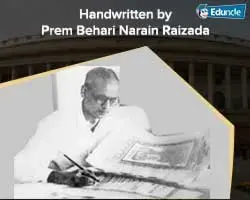 The original Constitution of India was handwritten by Prem Behari Narain Raizada in a flowing italic style with beautiful calligraphy.
The original Constitution of India was handwritten by Prem Behari Narain Raizada in a flowing italic style with beautiful calligraphy.
He used 254 pen-holder nibs of NO.303 and devoted his six months to complete the writing.
He was allotted a room in Constitution House by the Government of India to execute the prominent work.
Instead of charging any kind of remuneration, he had asked permission to write his name on every page of the constitution and the name of his grandfather with his name on the last page.
A Constitution with Artistic Ingenuity
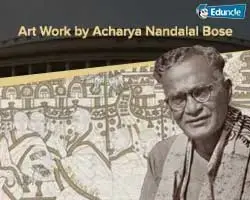 Our Constitution might not be one of the most recited scripts but is an example of hand crafted creativity.
Our Constitution might not be one of the most recited scripts but is an example of hand crafted creativity.
This momentous task of accomplishing the art work in every page of Constitution was handed over to Acharya Nandalal Bose in Kala Bhawan, Shantiniketan along with his students.
Nandalal Bose himself painted the major images and guided his students in designing other art work.
The most important page of Constitution “The Preamble”, also called as the face of Constitution, was decorated by Beohar Rammanohar Sinha, one of Nandalal Bose’s student.
Constitution Narrating an Extensive Journey
Our Constitution came into force after a long expedition with Constituent Assembly.
The Constituent Assembly set Drafting Committee on 29th August 1947 to prepare a Draft Constitution under the chairmanship of 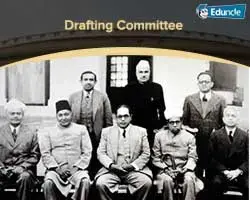 Dr. Bhim Rao Ambedkar, also known as “Father of Indian Constitution”.
Dr. Bhim Rao Ambedkar, also known as “Father of Indian Constitution”.
The Assembly has discussed and passed 2473 amendments out of 7635 tabled. It took exactly two years, eleven months. and seventeen days for the Assembly in drafting the constitution.
After getting the final draft, Constitution of India was adopted on 26th November 1949 and on 24th January 1950, 284 members signed the Constitution.
When they were signing, it was raining heavily outside that was considered as a good sign.
And finally, after 2 days on 26th January 1950, the Constitution of India came into force and thus we celebrated our First Republic Day.
26th January! The date has a history behind it!
The date is mentioned in the history related to the mass movement demanding “Purna Swaraj” (Complete Independence) during 1929-30.
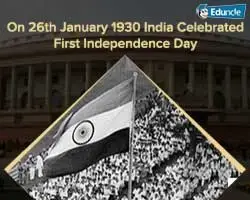 On one side Mahatma Gandhi was demanding gradual freedom starting from the domination status and on the other side Pt. Jawaharlal Nehru and Subhash Chandra Bose were demanding immediate and complete freedom.
On one side Mahatma Gandhi was demanding gradual freedom starting from the domination status and on the other side Pt. Jawaharlal Nehru and Subhash Chandra Bose were demanding immediate and complete freedom.
Finally, Nehru Ji was elected as President and along with Sardar Patel, Rajaji & Gandhi Ji, the Indian Declaration of Independence was drafted and on 31st December 1929, Nehru Ji hoisted the tricolor flag with Gandhi charkha in centre.
On 26th January 1930, Purna Swaraj was publicly issued and 26th January was celebrated as “Indian Independence Day” for the next 17 years.
In 1947, we requested the British to grant freedom on the same date but Lord Mountbatten choose 15th August.
This was the reason when the constitution was formed, the date to declare it, was chosen as 26th January 1950.
Indian Constitution, a Bag of Borrowings
Our Constitution is a result of experiences gained by other Constitutions across the globe.
“Parliamentary form of Government, Rule of Law, Law making procedure, Single Citizenship, Institution of Speaker, Doctrine of pleasure tenure of civil servants” are taken from the British Constitution.
“Judicial System, Fundamental Rights” are taken from the American Constitution.
“Federal System with a strong central authority, Residual powers,  Centre State Relation” are taken from the Canadian Constitutions.
Centre State Relation” are taken from the Canadian Constitutions.
“Directive Principles, Elections of the President of India” are taken from the Irish Constitution.
“Concurrent list, Freedom of Trade and Service within Country” are taken from the Australian Constitution.
“Emergency Provision” from the Weimar Constitution.
“Five Year Plans, Fundamental Duties” from the Soviet Constitution.
“Office of the Governor, Powers of the federal jury” from the Govt. of India Act 1935.
“Amendment of Constitution” from the South African Constitution.
World’s Best Constitution

The Constitution of India is the best constitution in the World.
Being the longest constitution, it had been amended only 101 times.
In 68 years of the adoption, taking in view the length of the constitution, the number of amendments are less.
Constitution Combining Rigidity and Flexibility
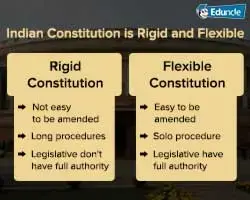 The constitution of India is a mixture of rigidity and flexibility. It is partly rigid and partly flexible.
The constitution of India is a mixture of rigidity and flexibility. It is partly rigid and partly flexible.
This is because of some provision available with the law and legislations.
The Constitution is partly rigid because certain provisions can be amended by a two-third majority in Parliament and ratified by at least fifty percent of the states and the remaining provisions can be amended by Parliament by a two-third majority.
The constitution is partly flexible because certain provisions of the constitution can be amended by a simple majority in Parliament.
Indian Constitution has a Preamble
The constitution of India begins with a Preamble that defines the source of authority, Indian State, and the objectives.
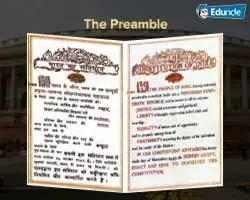 The Preamble can be read as:
The Preamble can be read as:
WE, THE PEOPLE OF INDIA, having solemnly resolved to constitute India into a sovereign socialist secular democratic republic and to secure to all its citizens, JUSTICE social, economic, and political; LIBERTY of thought, expression, belief, faith, and worship, EQUALITY of status and of opportunity: and to promote among them all FRATERNITY assuring the dignity of the individual and the unity and integrity of the Nation IN OUR CONSTITUENT ASSEMBLY this twenty-sixth day of November 1949, do HEREBY ADOPT, ENACT, AND GIVE TO OURSELVES THIS CONSTITUTION.
Federal and Unitary Constitution
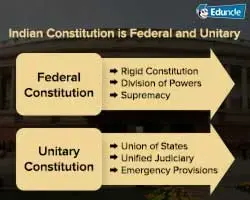 Indian constitution contains both features of a federal constitution and unitary constitution.
Indian constitution contains both features of a federal constitution and unitary constitution.
Federal Features of Indian Constitution are Rigid Constitution, Division of Powers, Supremacy, and Independence of the Judiciary.
Unitary Features of Indian Constitution are the Union of States, Representation in the Legislature, Appointment on Key Positions, Disturbances in the state, Unified Judiciary, Power to make laws, Power to form new states and to change existing boundaries, and Emergency Provisions.
Constitution with Parliamentary Form of Government
The Government of India is a parliamentary form of government because the executive is answerable and responsible to the legislature.
In parliamentary form of government -
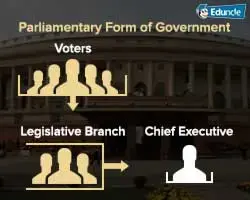 The head of the state is nominal or titular.
The head of the state is nominal or titular.
The executive and the legislature work in close cooperation.
The executive in a Parliamentary system is responsible to the legislature for all its actions.
The responsibility of the Council of Ministers must be collective.
The members of the Council of Ministers should belong to a single political party and remain committed to a definite political ideology, to remain a homogenous body.
The accepted norm of the parliamentary form of government is the leadership of the Prime Minister.
Indian Constitution Guarantees Fundamental Rights
The Part III of the Constitution of India describes the ‘Fundamental Rights' that guarantee civil freedom to all the citizens of India to allow them to live in peace and harmony.
There are six fundamental rights mentioned in the Constitution.
Right to Equality: Equality before the law. No partiality based on 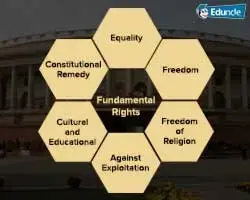 race, religion, caste, creed, gender, or place of birth.
race, religion, caste, creed, gender, or place of birth.
Right to Freedom: Right to speech and expression, to assemble peacefully or to form an association, to move freely throughout the territory of India, to life and liberty, reside and settle in any part of India etc.
Right to Freedom of Religion: Freedom of conscience and profession, to run religious affairs and to give religious instructions in certain institutions.
Right against Exploitation: Banning of forced labor and prohibition of employment of children in perilous jobs.
Cultural and Educational Rights: Preservation of language and culture of minorities and right of minorities to establish educational institutions.
Right to Constitutional Remedy: To move the courts for issuance of writs & explains the writs of Habeas corpus, Mandamus, Prohibition, Quo Warranto, Certiorari.
Indian Constitution Sets Fundamental Duties
The Constitution has set some duties for Indian Citizens towards the country, such as:
Abide by the Constitution and respect its ideals and institutions, the National Flag and the National Anthem;
Cherish and follow the noble ideals which inspired our national struggle for freedom;
Uphold and protect the so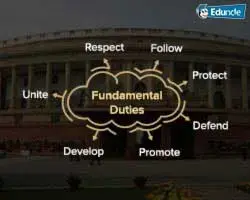 vereignty, unity, and integrity of India;
vereignty, unity, and integrity of India;
Defend the country and render national service when called upon to do so;
Promote harmony and the spirit of common brotherhood amongst all the people of India transcending religious, linguistic and regional or sectional diversities; to renounce practices derogatory to the dignity of women;
Value and preserve the rich heritage of our composite culture;
Protect and improve the natural environment including forests, lakes, rivers and wildlife, and to have compassion for living creatures;
Develop the scientific temper, humanism and the spirit of inquiry and reform;
Safeguard public property and to abjure violence;
Strive towards excellence in all spheres of individual and collective activity so that the nation constantly rises to higher levels of endeavor and achievement.
Indian Constitutions Provides a number of Directive Principles
Indian constitution constitutes the Directive Principles of State Policy which contain the broad directives or guidelines to be followed by the State while establishing policies and laws.
The Directive Principles are divided into the following three 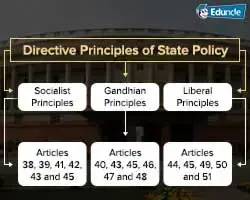 categories:
categories:
Socialistic Directives for securing the welfare of the people of India, equal distribution of the material resources of the country protection of the fundamental rights of the children and youth, equal pay for equal work, education etc.
Gandhian Directives for organizing village Panchayat, prohibition of intoxicating drinks and cow-slaughter, secure living wage, decent standard of life, and to promote cottage industries, to provide free and compulsory education to all children up to 14 years of age etc.
Liberal Intellectual Directives for uniform civil code throughout the country and the legislatures to follow in issuing orders or making laws.
Indian Constitution Sanctions Single Citizenship
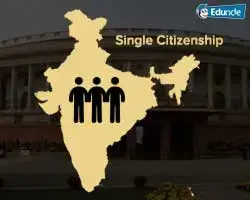 The Constitution of India has established a single and uniform citizenship for the whole of the country.
The Constitution of India has established a single and uniform citizenship for the whole of the country.
It indicates that all Indian citizens will be obligated to the Indian Union.
The Indian Constitution does not recognize state citizenship and as such, there is no distinction between the citizens of two or more States.
There is an exception to this rule when applied to Kashmir that no one other than a permanent resident of Kashmir can acquire landed property in Kashmir.
But it is a temporary provision that will be abolished when Kashmir is fully assimilated to the Indian Union.
In this article, we have shared few important facts of our Constitution that should be known by you being a citizen of this country.
It is a good practice to know about the country in which you are living.
If you liked the article and found it informative, kindly share it with you friends.
For more static GK follow us on Facebook and YouTube
Suggested Reads:
Indian National Symbols- National Flag, Emblem & Anthem The A – Z Guide for Industrial Relation & Labour Laws in India Indian Banking Law Asked In Govt. Job Exams Indian Corporate Laws: A Complete Guide
Thank You

















